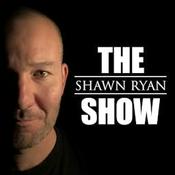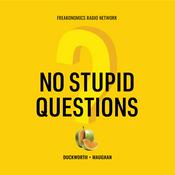The CRUX: True Survival Stories

206 episodes

Buried Alive: Surviving a Himalayan Avalanche at 14,000 Feet | E203
2025/12/22 | 55 mins.
In this episode of the Crux True Survival Story Podcast, host Julie Henningsen delves into the harrowing survival story of Taylor Pajunen, a NOLS mountaineering course participant. On April 20, 2023, an avalanche hit Taylor's mountaineering camp at 14,000 feet in the Garhwal Himalayas, burying their tents and leaving the group to face terrifying conditions. Taylor recounts the moments leading up to the disaster, the immediate aftermath, and the incredible teamwork and luck that helped them survive. The episode highlights the importance of quick thinking, the unpredictability of nature, and the deep impact the experience had on Taylor's life. Time Stamps: 00:50 Meet the Hosts: Kaycee and Julie 01:11 Avalanche in the Garhwal Himalayas 01:44 Interview with Survivor Taylor Pajunen 02:39 Taylor's Journey to NOLS 06:02 Challenges and Group Dynamics 10:53 The Avalanche Strikes 18:38 Surviving the Avalanche 28:13 Instructors' Struggle and Superhuman Feats 29:44 Realization of the Seriousness 31:24 The Pep Rally Poem 32:27 Survival Strategies and Challenges 36:44 High Altitude Farting Explained 38:33 Morning After the Avalanche 41:05 Self-Rescue Decision 42:43 Reaching Zero Camp 43:59 Debrief and Reflection 45:17 Returning to Civilization 46:54 Post-Rescue Reflections 54:43 Podcast Conclusion and Listener Engagement Listen AD FREE: Support our podcast at patreaon: http://patreon.com/TheCruxTrueSurvivalPodcast Email us! [email protected] Instagram https://www.instagram.com/thecruxpodcast/ Get schooled by Julie in outdoor wilderness medicine! https://www.headwatersfieldmedicine.com/ Hosted by Simplecast, an AdsWizz company. See pcm.adswizz.com for information about our collection and use of personal data for advertising.

Tragedy on Victory Peak | Disaster Strikes E202
2025/12/18 | 28 mins.
In this episode of 'Disaster Strikes,' hosts Kaycee McIntosh and Julie Henningsen delve into the tragic story of Natalia Nagovitsyna, a Russian mountaineer who perished while attempting to summit Victory Peak in Kyrgyzstan. Despite having already conquered four of the five Snow Leopard Peaks, Natalia's climb ended in heartbreak on August 2025, with her and fellow climber Luca Sinigaglia losing their lives in one of the world's most unforgiving mountain terrains. The episode explores the brutal conditions of Victory Peak, the heroic but ultimately futile rescue efforts, and the sobering realities of high-altitude mountaineering. The story highlights not only the relentless pursuit of mountaineering dreams but also the high cost that comes with scaling the world's most dangerous peaks. 00:00 Introduction to Disaster Strikes 00:38 The Death Zone: A Place of No Mercy 01:18 Victory Peak: The Ultimate Challenge 03:43 Natalia Nagovitsyna: A Story of Determination and Tragedy 06:10 The Climb and the Fall 09:21 The Deadly Descent 18:22 The Rescue Attempts 22:30 The Legacy of Victory Peak 26:59 Conclusion: Lessons from Tragedy References Fox News - "Rescue effort halted for stuck climber on treacherous mountain after climber dies trying to help her: reports" (August 2025) CBS News - "Climber dies trying to rescue injured Russian woman from Kyrgystan's highest mountain; search halted" (August 2025) CNN - "Victory Peak, Kyrgyzstan: Hopes fade for injured climber stuck up icy mountain for 12 days after breaking her leg" (August 2025) The Moscow Times - "Russia's Top Investigator Orders Rescue of Climber in Kyrgyzstan" (August 2025) Meduza - "Kyrgyzstan's mountains turn deadly Russian climber is stranded in Kyrgyzstan with broken leg and no food as weather thwarts rescue attempts" (August 2025) Explorersweb - "Pobeda: The Snow Leopards' Most Dangerous Summit" (2025) Explorersweb - "The Tragic End of Natalia Nagovitsyna's Ordeal on Pobeda Peak" (August 2025) Ultimate Kilimanjaro - "Natalia Nagovitsyna: Stranded (Who Was She & How Did She Die?)" (2025) Gripped Magazine - "Rescuer Dies as Climber's Ordeal Continues" (August 2025) Adventure Mountain - "Drama on Kyrgyzstan's highest mountain – rescue operation called off" (August 2025) Wikipedia - "High-altitude pulmonary edema" (Medical information on HAPE) Cleveland Clinic - "High-Altitude Pulmonary Edema (HAPE): Causes & Treatment" (2025) NCBI Bookshelf - "High Altitude Pulmonary Edema" (StatPearls, 2023) Physiopedia - "High-Altitude Pulmonary Oedema" Expeditions Unlimited - "Mountaineering expedition Kyrgyzstan: climb Victory Peak" (Route descriptions and logistics) SummitPost - "Abalakov route - Pobeda" (Technical climbing information) Central Asia Travel - "Pobeda Peak. Expedition to Pobeda Peak (7439 m)" (Route details) Wikipedia - "Jengish Chokusu" (Mountain history and climbing statistics) KULUAR - "Pobeda Peak 2021. Season results. Three dead on 21 successful ascents" (2024) KULUAR - "Top 5 Deadliest Peaks in the World" (2024) Hosted by Simplecast, an AdsWizz company. See pcm.adswizz.com for information about our collection and use of personal data for advertising.

Plane Disintegrated Midair: Juliane Koepcke Falls Two Miles Into the Amazon | E201
2025/12/15 | 58 mins.
On December 24th, 1971, 17-year-old Juliane Koepcke boarded LANSA Flight 508 with her mother Maria, bound for a Christmas reunion with her father in the Peruvian Amazon. What should have been a routine one-hour flight became one of aviation's most catastrophic disasters—and one of its most miraculous survival stories. When lightning struck the aircraft at 21,000 feet, the plane disintegrated mid-air. Juliane fell nearly two miles through the sky, still strapped to her seat, and somehow survived the impact with the jungle canopy below. She was the sole survivor among 92 people. But survival was just the beginning. Injured, nearly blind without her glasses, and wearing only a mini-dress and one sandal, Juliane spent 11 days navigating the Amazon rainforest alone. With a broken collarbone, deep arm wound, torn knee ligament, and severe concussion, she drew on lessons learned from her zoologist parents to find her way to rescue. This is a story about preparation meeting catastrophe, about knowledge becoming instinct, and about the thin line between miracle and tragedy. 00:00 Introduction to Case Knives 00:31 Welcome to the Crux True Survival Story Podcast 00:55 Celebrating 200 Episodes 01:23 Revisiting Julianne Koepcke's Survival Story 02:21 The Plane Crash 04:15 Julianne's Background and Upbringing 08:43 The Fateful Flight 17:09 Julianne's Miraculous Fall 26:10 Surviving the Jungle 28:43 Julianne's Immediate Reaction and Isolation 29:15 The Terrifying Reality of the Amazon 30:35 Survival Odds and Strategies 31:56 Julianne's Remarkable Composure 34:34 Navigating the Jungle 35:01 Jungle Dangers and Misconceptions 39:06 The Real Killers in the Jungle 42:44 Julianne's Journey to Rescue 53:53 The Aftermath and Julianne's Legacy 57:20 Conclusion and Listener Engagement Listen AD FREE: Support our podcast at patreaon: http://patreon.com/TheCruxTrueSurvivalPodcast Email us! [email protected] Instagram https://www.instagram.com/thecruxpodcast/ Get schooled by Julie in outdoor wilderness medicine! https://www.headwatersfieldmedicine.com/ References: "LANSA Flight 508." Wikipedia. https://en.wikipedia.org/wiki/LANSA_Flight_508 "Juliane Koepcke." Wikipedia. https://en.wikipedia.org/wiki/Juliane_Koepcke Koepcke, Juliane. "Juliane Koepcke: How I Survived a Plane Crash." BBC, March 24, 2012. Pleitgen, Frederik. "Survivor still haunted by 1971 air crash." CNN, July 2, 2009. https://www.cnn.com/2009/WORLD/europe/07/02/germany.aircrash.survivor/ Herzog, Werner. Wings of Hope (Documentary). 1998. Koepcke, Juliane. When I Fell From the Sky (German: Als ich vom Himmel fiel). Piper Verlag, 2011. "How Juliane Koepcke Survived the Crash of LANSA Flight 508." HowStuffWorks, March 12, 2024. https://history.howstuffworks.com/historical-figures/juliane-koepcke.htm "The Incredible Story Of Juliane Koepcke, The Teenager Who Fell 10,000 Feet Out Of A Plane And Somehow Survived." All That's Interesting, April 28, 2025. https://allthatsinteresting.com/juliane-koepcke "The Story Of Juliane Koepcke: Surviving The Amazon Rainforest." Rainforest Cruises, July 28, 2021. https://www.rainforestcruises.com/guides/the-story-of-juliane-koepcke "The Incredible Survival Story Of Juliane Koepcke And LANSA Flight 508." Simple Flying, November 15, 2022. https://simpleflying.com/lansa-flight-508-survival-story-juliane-koepcke/ "Her Plane Disintegrated in Mid-Air, and That Was the Easy Part: How This Teen Survived An Impossible Ordeal." Explorersweb, January 16, 2025. https://explorersweb.com/juliane-koepckes-impossible-peruvian-survival/ "Was Teenager Juliane Koepcke the Lone Survivor of a 1971 Plane Crash?" Snopes, April 15, 2021. https://www.snopes.com/fact-check/juliane-koepcke-plane-crash/ "Maria Koepcke." Wikipedia. https://en.wikipedia.org/wiki/Maria_Koepcke "Panguana Research Station." Wikipedia. https://en.wikipedia.org/wiki/Panguana "Lockheed L-188 Electra." Wikipedia. https://en.wikipedia.org/wiki/Lockheed_L-188_Electra "Amazon Rainforest." Wikipedia. https://en.wikipedia.org/wiki/Amazon_rainforest "Terminal Velocity and Skydiving." Skydive California. https://www.skydivecalifornia.com "Clavicle Fractures (Broken Collarbone)." OrthoInfo, American Academy of Orthopaedic Surgeons. https://orthoinfo.aaos.org "Myiasis: Fly Larva Infestation." Centers for Disease Control and Prevention (CDC). https://www.cdc.gov "Survival in Tropical Rainforest Environments." Adventure Alternative, jungle survival guidelines for Borneo expeditions. "Amazon Basin Biodiversity and Population Density." World Wildlife Fund (WWF). https://www.worldwildlife.org Hosted by Simplecast, an AdsWizz company. See pcm.adswizz.com for information about our collection and use of personal data for advertising.

10 Days Lost: California Hiker Survives Santa Cruz Mountains Against All Odds | E200
2025/12/08 | 47 mins.
In this episode of the Crux True Survival Story Podcast, hosts Kaycee McIntosh and Julie Henningsen delve into the harrowing ten-day ordeal of Lukas McClish, an experienced hiker who became lost in the fire-ravaged landscape of Big Basin Redwood State Park. Navigating through treacherous terrain transformed by the 2020 CZU Lightning Complex Fire, Lukas used his wilderness skills and mental resilience to survive without food, relying on creek water, wild berries, and an extraordinary will to live. The podcast also highlights the massive search and rescue effort involving nearly 300 individuals and drone technology that eventually led to Lukas' miraculous rescue. This story underscores the importance of preparation, mental fortitude, and the unyielding spirit of community support in wilderness survival scenarios. Time Stamps: 00:32 Welcome to the Crux True Survival Story Podcast 00:56 Lukas McClish's Struggle for Survival 03:16 The Start of Lukas' Journey 05:12 Lukas' Unplanned Ordeal 10:56 The Harsh Reality Sets In 20:22 The Search Begins 24:36 Surviving the Santa Cruz Mountains 25:09 Close Calls and Hypothermia 25:26 Desperation and Yelling for Help 26:46 The Search Intensifies 28:07 Challenges of the Burn Scar 30:14 Day 10: A Glimmer of Hope 31:28 The Rescue Operation 34:22 Reunion and Recovery 39:59 Lessons Learned 44:16 Community Support and Reflection 45:49 Conclusion and Gratitude Listen AD FREE: Support our podcast at patreaon: http://patreon.com/TheCruxTrueSurvivalPodcast Email us! [email protected] Instagram https://www.instagram.com/thecruxpodcast/ Get schooled by Julie in outdoor wilderness medicine! https://www.headwatersfieldmedicine.com/ REFERENCES: ABC7 News (KGO-TV San Francisco) - Multiple reports, June 2024 KSBW Salinas - Video interviews and reports, June 2024 Santa Cruz Sentinel - Detailed local coverage, June-July 2024 San Lorenzo Valley Post - In-depth feature with family quotes, July 2024 The New York Times / Seattle Times - Feature story, June 2024 CNN - National coverage, June 2024 CBS News - National coverage, June 2024 NBC News - National coverage, June 2024 GearJunkie / The Inertia - Investigative analysis by Evan Quarnstrom, July 2024 Santa Cruz County Sheriff's Office - Official statements and social media posts Cal Fire CZU - Official statements Boulder Creek Fire Department - Official statements Hosted by Simplecast, an AdsWizz company. See pcm.adswizz.com for information about our collection and use of personal data for advertising.

Catastrophic Dive: Lessons from the Titan Submersible Tragedy | Disaster Strikes E199
2025/12/04 | 37 mins.
In this episode of the Crux podcast segment 'Disaster Strikes,' hosts Kaycee McIntosh and Julie Henningsen delve into the harrowing story of the Titan submersible tragedy that occurred on June 18, 2023. The episode recounts the fateful dive that aimed to explore the Titanic's resting place but ended in the instant death of all five passengers due to a catastrophic implosion. The narrative highlights the lives and motivations of the victims, and details the cascade of ignored safety warnings that led to the disaster. Through a thorough examination of the events, this episode underscores the dangerous allure of extreme tourism and the critical importance of adhering to established safety standards in perilous environments. 00:00 Introduction to Disaster Strikes 00:43 A Tragic Tale Begins 01:56 Meet the Passengers 05:55 Ocean Gate's Ambitious Vision 08:13 Ignored Warnings and Red Flags 13:22 The Fatal Flaws of Titan 17:21 The Power of Marketing and Blind Faith 18:43 The Tragic Dive Begins 20:48 Inside the Titan: Final Moments 23:19 The Desperate Search Effort 25:52 False Hope and Heartbreak 29:25 The Aftermath and Broader Implications 31:14 Lessons Learned from the Titan Tragedy 33:57 Final Thoughts and Reflections references: Primary Sources - Official Investigations: U.S. Coast Guard Marine Board of Investigation Final Report (August 2025) 327-page comprehensive investigation into the Titan implosion Chairman: Jason Neubauer Available at: U.S. Coast Guard official website National Transportation Safety Board (NTSB) Investigation (Ongoing as of 2025) Hull failure analysis Transportation Safety Board of Canada (TSB) Investigation Canadian component of international investigation News Media - Major Coverage: NPR - "Coast Guard says Titan submersible deaths were preventable" (August 2025) Coast Guard final report analysis ABC News - "Titan submersible implosion final report critical of CEO's inadequate oversight" (August 2025) David Lochridge whistleblower testimony details NBC News - "Titan submersible disaster that killed 5 people was 'preventable,' Coast Guard report says" (August 2025) By David K. Li and Melissa Chan CBS News - "Titan submersible owner OceanGate used 'intimidation tactics'" (August 2025) Coast Guard findings on regulatory evasion ABC News - "'All good here': Last messages revealed from Titan submersible before implosion" (September 2024) Final communications timeline CNN - "Titanic submersible: Christine Dawood let son take her place on doomed trip" (June 2023) Family interviews and survivor testimony TODAY.com - "Mother Of Suleman Dawood Says She Was Originally Supposed To Go On Titan Sub" (June 2023) Christine Dawood exclusive interview NBC News - "Teen who died on Titanic sub brought Rubik's Cube in bid to break world record" (June 2023) Suleman Dawood profile BBC/CBC News - "19-year-old Titan passenger wanted to break Rubik's Cube world record" (June 2023) Christine Dawood interview about son's goals Comprehensive Reference Sources: Wikipedia - "Titan submersible implosion" Comprehensive timeline and technical details Regularly updated with investigation findings Wikipedia - "Titan (submersible)" Technical specifications and history Encyclopedia Britannica - "Titan submersible implosion" Overview and context Boat International - "US Coast Guard releases report into Titan submersible implosion" (August 2025) Industry expert analysis Documentary Sources: Netflix Documentary - "Titan: The OceanGate Disaster" (June 2025) Director: Mark Monroe Interviews with former employees and whistleblowers Passenger Profiles: Wikipedia - "Hamish Harding" Biography and exploration history Wikipedia - "Shahzada Dawood" Family background and business profile Wikipedia - "Stockton Rush" OceanGate founder biography Wikipedia - "Paul-Henri Nargeolet" Titanic exploration career Technical and Expert Analysis: PBS NewsHour - "Experts say the Titan sub's unconventional design may have destined it for disaster" Engineering analysis Engineering.com - "The Titan Tragedy—A Deep Dive Into Carbon Fiber" Material science analysis SYFY - "Titan Tragedy: James Cameron On Why Design Was 'Horrible Idea'" Expert filmmaker perspective Safety and Whistleblower Reports: TechCrunch - "A whistleblower raised safety concerns about OceanGate's submersible in 2018. Then he was fired" (June 2023) David Lochridge case details CBS News - "Years before Titanic sub went missing, OceanGate was warned about 'catastrophic' safety issues" 2018 industry letter warning Timeline and Search Operation: Al Jazeera - "Titan sub timeline: When did it go missing and other key events" (June 2023) Comprehensive timeline CNN - Live coverage: "Missing Titanic sub crew killed after 'catastrophic implosion'" (June 22, 2023) Real-time search operation coverage Extreme Tourism Context: NationalWorld - "The reasons why the super rich go on extreme expeditions, according to psychologists" Psychology of extreme tourism ScienceDirect - "Exploring the psychology of extended-period expeditionary adventurers" Academic research on adventure psychology Additional Coverage: The Mirror - "Titan submarine victim's wife relives horror after husband and son killed in implosion" Christine Dawood extended interview E! News - "Family of Titanic Sub Passenger Hamish Harding Honors 'Remarkable' Legacy After His Death" Harding family statements Yahoo News - "OceanGate told the woman whose husband and son were on the Titan that comms were often patchy" Christine Dawood waiting experience Hosted by Simplecast, an AdsWizz company. See pcm.adswizz.com for information about our collection and use of personal data for advertising.
More Society & Culture podcasts
Trending Society & Culture podcasts
About The CRUX: True Survival Stories
Listen to The CRUX: True Survival Stories, TED Talks Daily and many other podcasts from around the world with the radio.net app

Get the free radio.net app
- Stations and podcasts to bookmark
- Stream via Wi-Fi or Bluetooth
- Supports Carplay & Android Auto
- Many other app features
Get the free radio.net app
- Stations and podcasts to bookmark
- Stream via Wi-Fi or Bluetooth
- Supports Carplay & Android Auto
- Many other app features


The CRUX: True Survival Stories
download the app,
start listening.


































